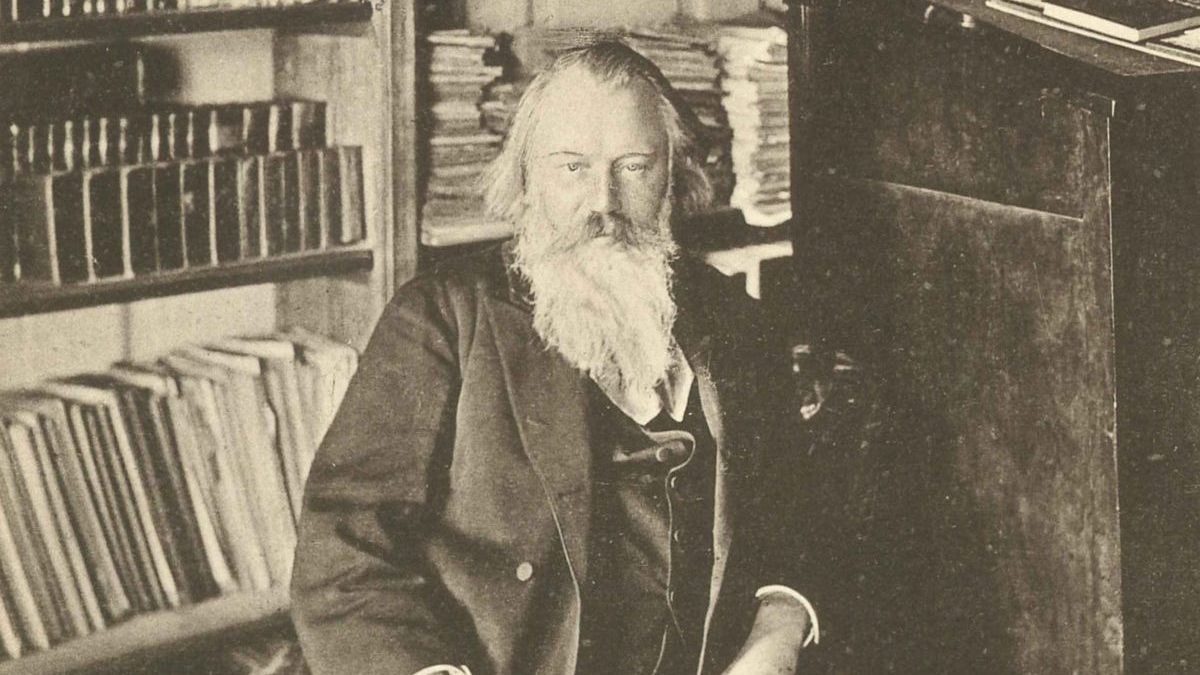Early photographs of Johannes Brahms capture a solitary, contemplative figure.
Brahms was a lifelong bachelor whose personal motto, Frei aber froh (“Free but happy”), found its way into the opening three pitches of the Third Symphony in the form of a musical cryptogram. The loving, platonic relationship between Brahms and Clara Schumann, and its creative influence, has been well-documented. Yet, scholars believe that for a period of time Brahms also harbored a deep, undeclared affection for Clara’s daughter, Julie Schumann. The announcement of Julie’s engagement to another man may have inspired Brahms to compose the wistful and nostalgic Alto Rhapsody, Op. 53 in 1869. The work was presented to Julie Schumann as a wedding gift.
Scored for contralto, male chorus, and orchestra, the Alto Rhapsody is a setting of verses from Johann Wolfgang von Goethe’s Harzreise im Winter (“An Autumn Journey in the Harz Mountains”). Its three sections move from lonely isolation to quiet, prayerful consolation. The first section evokes a sense of wandering amid the desolation of a disintegrating world. The alto line weaves an unpredictable path through dense, overgrown chromatic thickets. The second section takes the form of a restless, anguish-filled aria. With the entrance of the male chorus, the third section emerges suddenly as a majestic hymn to music. Pizzicato in the low strings suggests a distant allusion to the psaltery, the ancient stringed instrument referenced in the poem. These flowing pizzicato triplets provide peaceful resolution to the tempestuous triplets we hear early in the piece. At moments, this triplet rhythm meets gentle duple countercurrents. The final bars break off into silence, followed by a plagal cadence in the pure key of C major. In the final chord, the contralto voice, joined by a serene, pastoral woodwind choir, drifts away into the warm, celestial tones of the strings. The wanderer finds lasting solace.
This 1989 recording features Marjana Lipovšek with Claudio Abbado, the Ernst Senff Choir, and the Berlin Philharmonic:
Here is a translation of the text:
But who is that apart?
His path disappears in the bushes;
behind him the branches spring together;
the grass stands up again;
the wasteland engulfs him.Ah, who heals the pains
of him for whom balsam turned to poison?
Who drank hatred of man
from the abundance of love?
First scorned, now a scorner,
he secretly feeds on
his own merit,
in unsatisfying egotism.If there is on your psaltery,
Father of love, one note
his ear can hear,
then refresh his heart!
Open his clouded gaze
to the thousand springs
next to him who thirsts
in the wilderness!
Recordings
- Brahms: Rhapsody for Alto, Chorus, and Orchestra, Op. 53, Marjana Lipovsek, Ernst Senff Choir, Claudio Abbado, Berlin Philharmonic Amazon


I programmed this piece on my Master’s Choral Conducting recital at the University of Texas – Austin. I was fortunate to have a wonderful alto and a strong men’s chorus. Of course all of this was over 50 years ago but I still remember its impact on the performers as well as the audience. Brahms’ music is what comes to mind when asked, “Who were the greatest composers during the Romantic period?”
Thank you for sharing this beautiful gem! I have loved this work for many years. My favorite recording is of the wonderful contralto, Marian Anderson.
Sólo Brahms puede ahondarse en las profundidades de la angustia existencial humana con un lenguaje tan diáfano y profundo.
Uno lo adivina gran conocedor de tan oscuros páramos . Uno lo acompaña y admira desde lo más sentido del alma
Bendito peregrino…
“Only Brahms can delve into the depths of human existential anguish with such clear and profound language.
One guesses it a great connoisseur of such dark moors. One accompanies and admires him from the deepest sense of the soul
Blessed pilgrim …”